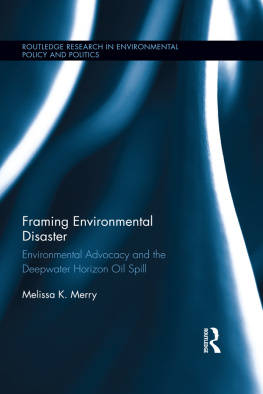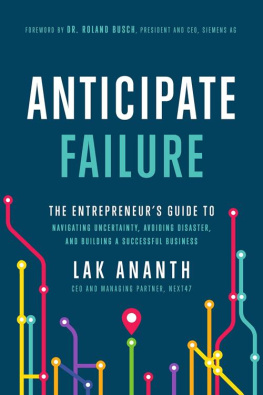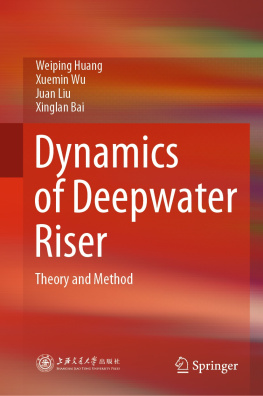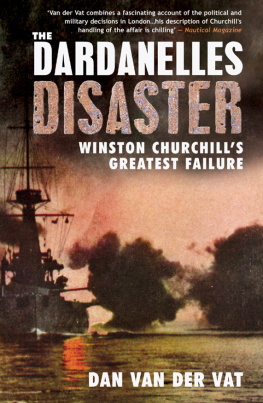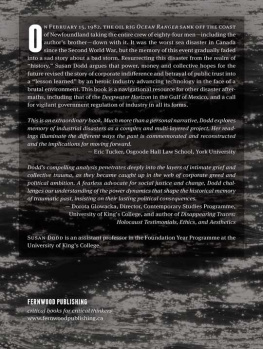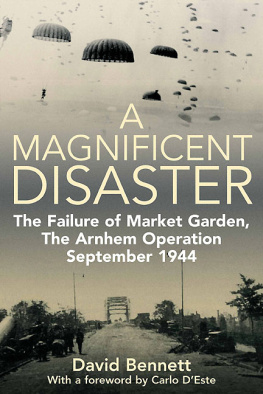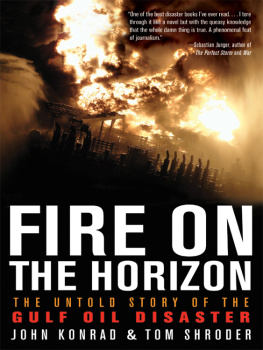Abrahm Lustgarten - Run to Failure: BP and the Making of the Deepwater Horizon Disaster
Here you can read online Abrahm Lustgarten - Run to Failure: BP and the Making of the Deepwater Horizon Disaster full text of the book (entire story) in english for free. Download pdf and epub, get meaning, cover and reviews about this ebook. year: 2012, publisher: W. W. Norton & Company, genre: Romance novel. Description of the work, (preface) as well as reviews are available. Best literature library LitArk.com created for fans of good reading and offers a wide selection of genres:
Romance novel
Science fiction
Adventure
Detective
Science
History
Home and family
Prose
Art
Politics
Computer
Non-fiction
Religion
Business
Children
Humor
Choose a favorite category and find really read worthwhile books. Enjoy immersion in the world of imagination, feel the emotions of the characters or learn something new for yourself, make an fascinating discovery.

- Book:Run to Failure: BP and the Making of the Deepwater Horizon Disaster
- Author:
- Publisher:W. W. Norton & Company
- Genre:
- Year:2012
- Rating:3 / 5
- Favourites:Add to favourites
- Your mark:
- 60
- 1
- 2
- 3
- 4
- 5
Run to Failure: BP and the Making of the Deepwater Horizon Disaster: summary, description and annotation
We offer to read an annotation, description, summary or preface (depends on what the author of the book "Run to Failure: BP and the Making of the Deepwater Horizon Disaster" wrote himself). If you haven't found the necessary information about the book — write in the comments, we will try to find it.
Run to Failure: BP and the Making of the Deepwater Horizon Disaster — read online for free the complete book (whole text) full work
Below is the text of the book, divided by pages. System saving the place of the last page read, allows you to conveniently read the book "Run to Failure: BP and the Making of the Deepwater Horizon Disaster" online for free, without having to search again every time where you left off. Put a bookmark, and you can go to the page where you finished reading at any time.
Font size:
Interval:
Bookmark:
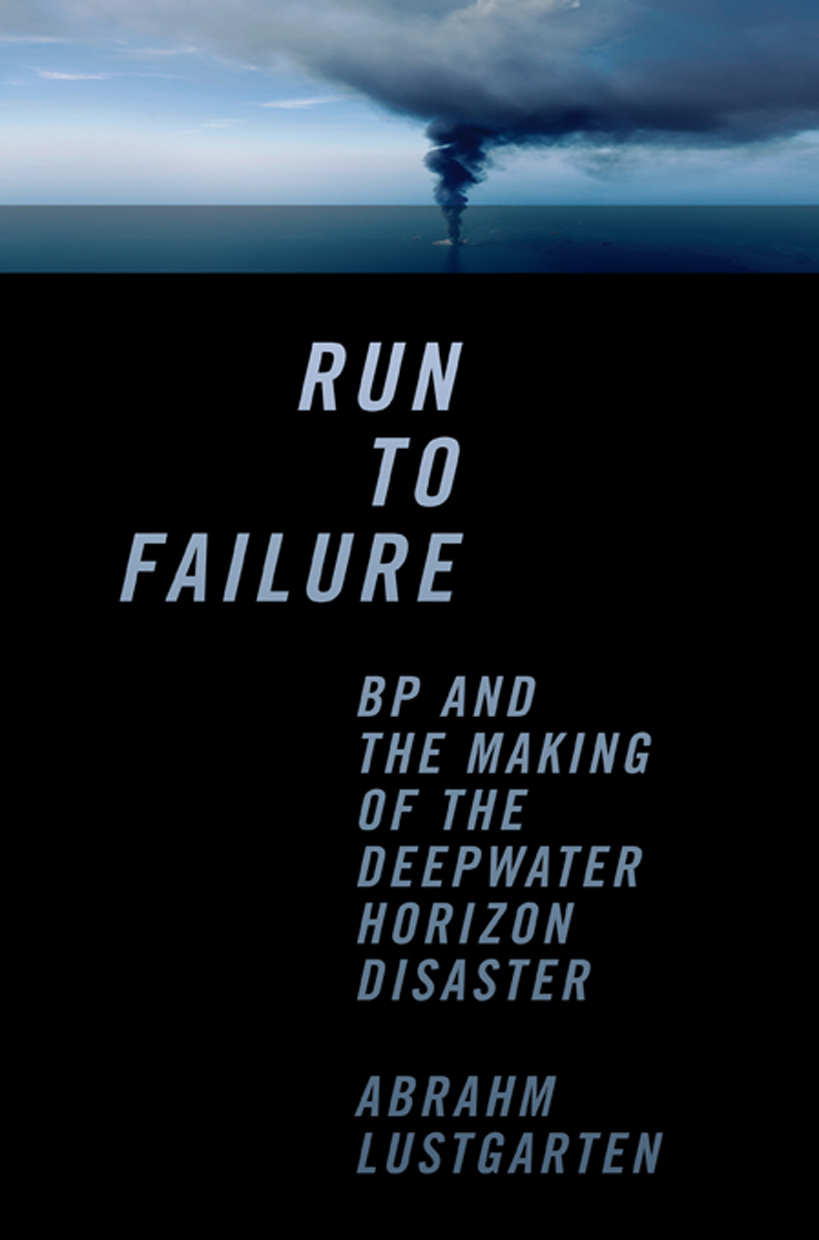
ALSO BY ABRAHM LUSTGARTEN
Chinas Great Train: Beijings Drive West and the
Campaign to Remake Tibet
RUN
to
FAILURE

BP and the Making of the
Deepwater Horizon Disaster
ABRAHM LUSTGARTEN
W. W. NORTON & COMPANY
New York London
For Jodie
Contents
Prologue
The burst of gas came from so deep within the bowels of the earth it may as well have come from another world. Thirteen thousand feet beneath the oceans silty floor and the earths crust and another five thousand feet underwatera total depth farther than fourteen Empire State buildings stacked atop one anotherhydrocarbons in the form of hot fluid saturated with dissolved methane seeped through the reinforced walls of a new oil well.
The well, an exploratory venture drilled by BP and called Macondo, was a three-mile-long tube of cement and steel that had been burrowed into the million-and-a-half-year-old rock in the weeks before. It was one of the industrys most important new efforts to find oil in the deep waters off the southern coast of the United States, and, while not the deepest, the Macondo was pushing the limits of drilling technology and risk.
This particular well had been a cursed project from the start. Miles above, where the sun skipped along the lapping waves of the Gulf of Mexico, the Macondo projects 126 oil workers had battled for weeks to control wild kicks of gas and to adapt to a series of setbacks doled out by this complicated and unpredictable well. Under stress and guided by conflicting mandates to drill quickly, drill safely, and drill cheaply, the workers had often made the wrong decisions. Now the Macondo was preparing to issue them one last challenge.
Inside the well, the gas, squeezed out of the earth by the natural pressure of the compressed rock and shoved upward by its own buoyancy, shot skyward at a pace that would bring it to the surface of the gulf in a matter of minutes. As it rose it expanded rapidly, the volume increasing the higher it got in the well, until the steel pipe and casing that channeled it upward could barely contain its explosive force.
On the ocean floor, the kickas such a geologic burp is called in the oil industryshot through the top of the well at the seafloor and continued upward through the mile-deep water in the long hose of steel called a riser pipe that connected the well to the surface. There, it slammed into the Deepwater Horizon drilling rig, a thirty-story structure with a footprint the size of an average Walmart Supercenter floating in the Gulf of Mexico. The rig was owned by a contractor, Transocean, and most of the crew on board were Transocean employees, all of whom were contracted to work for BP. With a burst like a canon, pent-up pressure from the oil and gas exploded from the twenty-one-inch pipe, which rose up out of the dark water. Bolts sheared off and valves were forced open. Drilling mud that had filled the well to cool the drill bit and balance the well pressure spewed across the deck of the rig, rushing against doors and spilling across stairways. With a roaring hiss, a cloud of natural gas began to envelop the rig.
The gas started at the drill floor, a small raised platform underneath the tower of a drilling derrick in the center of the Deepwater Horizons main deck. The drill floor, one of the highest working floors on the structure, is where the drill pipe is managed and decisions are made about the fluids and pressure in the well. From there, the gas spread to the rigs main deck below and toward two subdecks.
On the drilling floor, the Deepwaters driller on duty, Dewey Revette, had been monitoring the well readings and watching for a kick, but he hadnt seen the signsa strange but subtle fluctuation in well pipe pressure on multiple monitors. A few minutes earlier a sudden rise in pressure had broken a pump valve, and Revette had dispatched three of his crew to go belowdecks and fix it. When the blowout came, Revette, a driller named Stephen Curtis, and the rigs toolpusher, or drilling supervisor, Jason Anderson, scrambled to control the burst of gas. Anderson, cool-headed, had spent nine years working on the Deepwater Horizon and knew what to do. First, he diverted the spurting mud into a gas separator, thinking it would help capture the explosive materials from the messy mud. Then he triggered one of the emergency valves on the rigs blowout preventer, a three-hundred-ton piece of machinery lying on the gulfs floor meant to seal off the well in the case of a violent kick. But it was too late.
Two flights below, on the Deepwater Horizons second deck, Mike Williams manned the rigs electronics shop, next to the engine room. There, in a steel box full of controls and monitors, he guided the platforms electrical systems and power. A few feet away, diesel turbines generated that power and spun the drill bits miles inside the earth. Suddenly, Williams heard a deafening whine as the revolutions of the engines increased. But the dangeran envelope of gas that ballooned from the top of the riser pipe on the drilling floor abovewas invisible. Neither Williams nor anyone else on the rig except the small group that had scrambled to the drill deck had been told that the Macondo was blowing out.
The rig had an extensive network of sensors that were supposed to detect a combustible cloud of gas before it could reach the engines and the control room and issue a warning. Those alarms were meant to trigger a series of closing valves designed to keep the gas from burning up in the engines: one of the most important forms of protection in case of an accident. But the sensors didnt react, and the valves never shut. The gas saturated the air, turning the rigs engines normal cooling and ventilation intake into a source of gaseous fuel. The motors sucked the fumes out of the air, screaming higher and faster, their pistons whipping back and forth furiously. Another critical safety backup, the blowout preventer that Anderson had already tried to trigger in order to cut off the well, also failed, meaning the gas cloud on the rig would only get bigger. By the time Williams realized what was unfolding, there was little he could do to change it. He ran toward a fortified steel exit door, but as he reached it, one of the engines exploded. The six-foot-tall plate of metal blew off its hinges, striking him midstride. Dazed and bleeding, he slowly picked himself up, only to be slammed back down again by a devastating second blast.
On the deck above Williams, the Deepwater Horizons derrick was instantly engulfed in flames. The men on the drilling floor, including Jason Anderson, were killed quickly, but dozens of others were crushed or twisted or slashed by flying debris and were desperately crawling out of their own horrific emergencies, trying not to be entombed in an industrial grave. In his stateroom, Jimmy Harrell, Transoceans most senior supervisor on the rig, was temporarily blinded by flying insulation as the walls of his berth collapsed on him in the shower. On the second deck, Randy Ezell, the rigs senior toolpusher, was blown violently against the wall of his office and buried in debris.
Williams stumbled out toward a set of steel steps only to find that the walkway, which would have taken him up to the main deck, was missing. The engines were gone; the whole back of the rig was gone. Wiping away blood that blocked his vision, Williams sought another way. He heard a plea for help and stumbled over the body of an injured colleague. Above them a wall of black smoke drifted up from raging, seventy-five-foot flames. Williams couldnt carry the man. All he could do was try to save himself.
Next pageFont size:
Interval:
Bookmark:
Similar books «Run to Failure: BP and the Making of the Deepwater Horizon Disaster»
Look at similar books to Run to Failure: BP and the Making of the Deepwater Horizon Disaster. We have selected literature similar in name and meaning in the hope of providing readers with more options to find new, interesting, not yet read works.
Discussion, reviews of the book Run to Failure: BP and the Making of the Deepwater Horizon Disaster and just readers' own opinions. Leave your comments, write what you think about the work, its meaning or the main characters. Specify what exactly you liked and what you didn't like, and why you think so.

